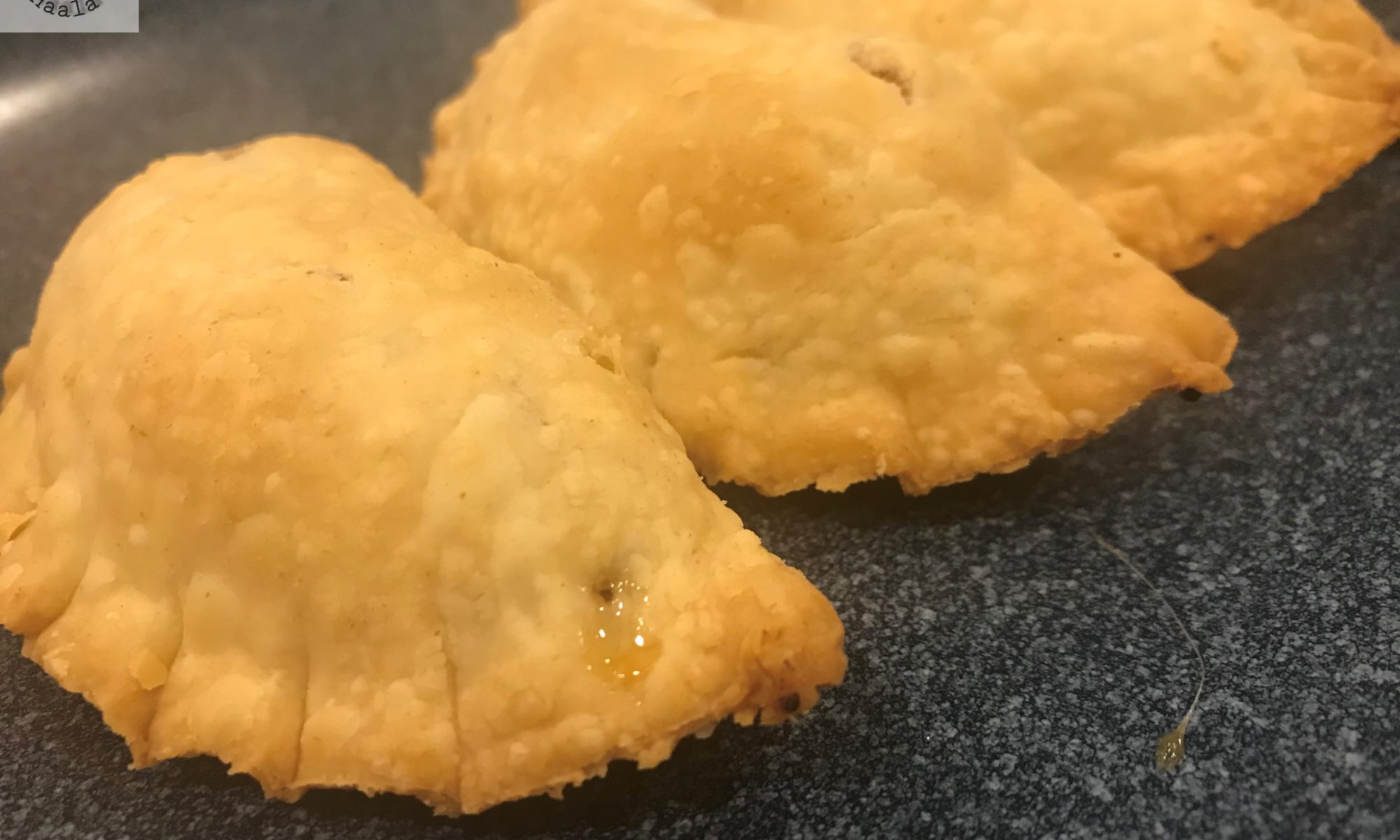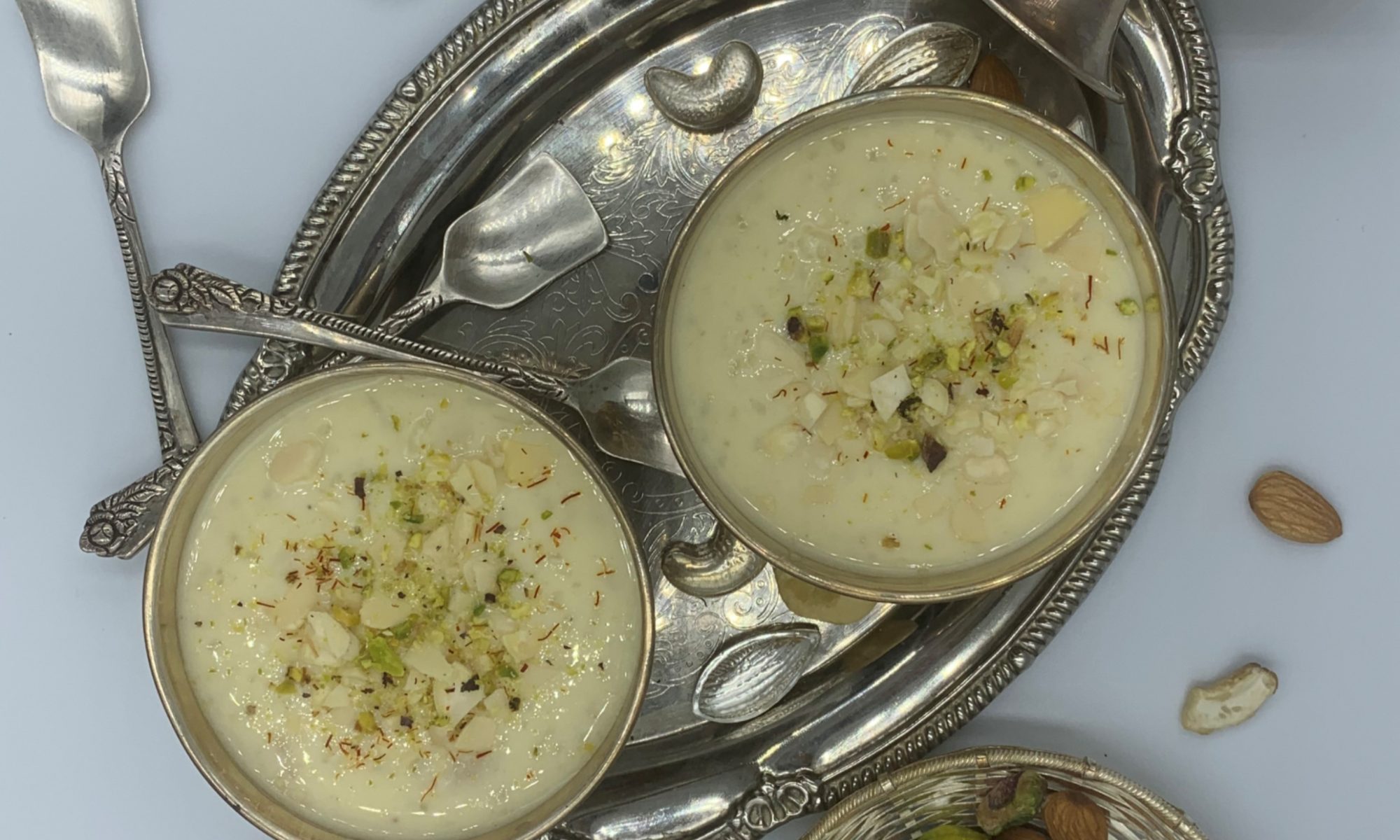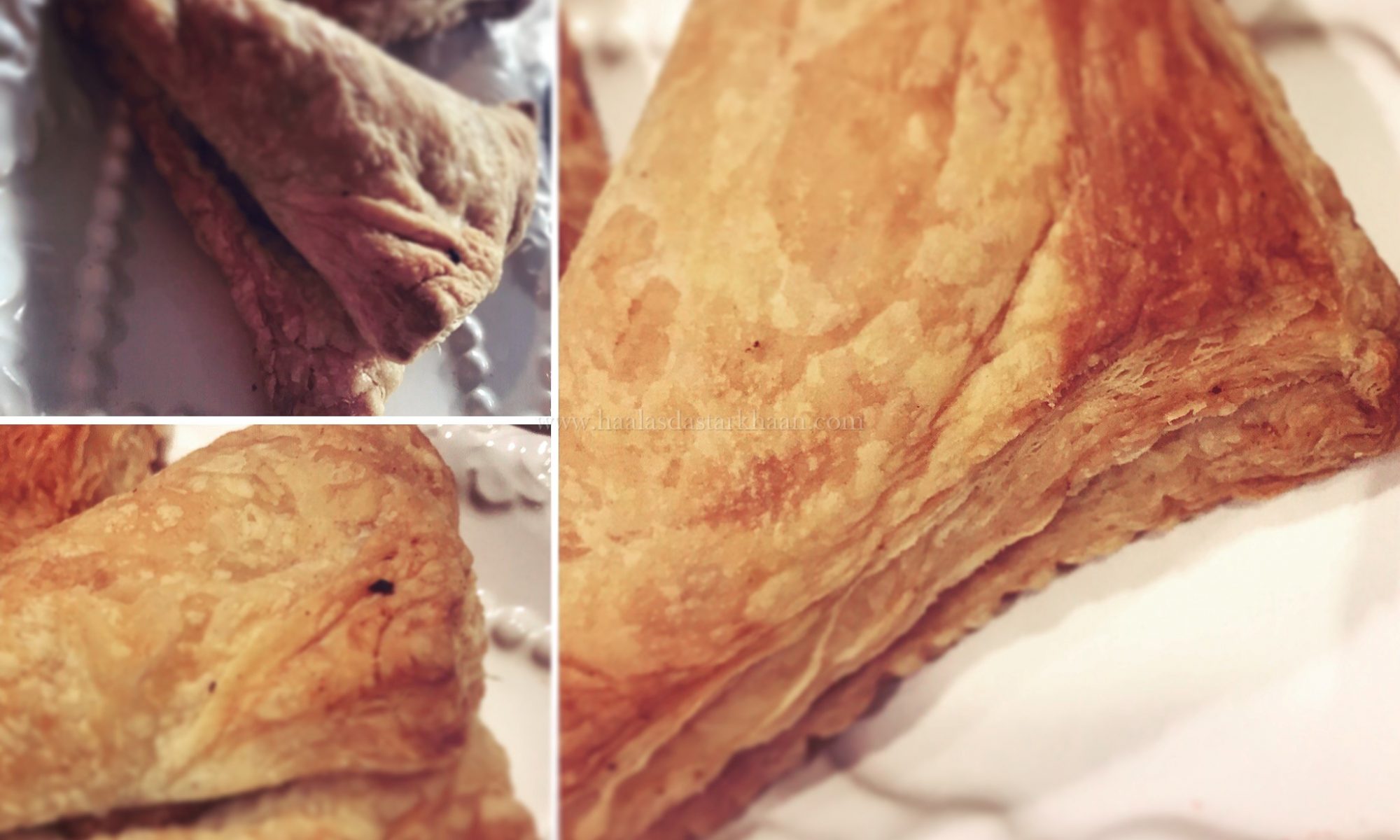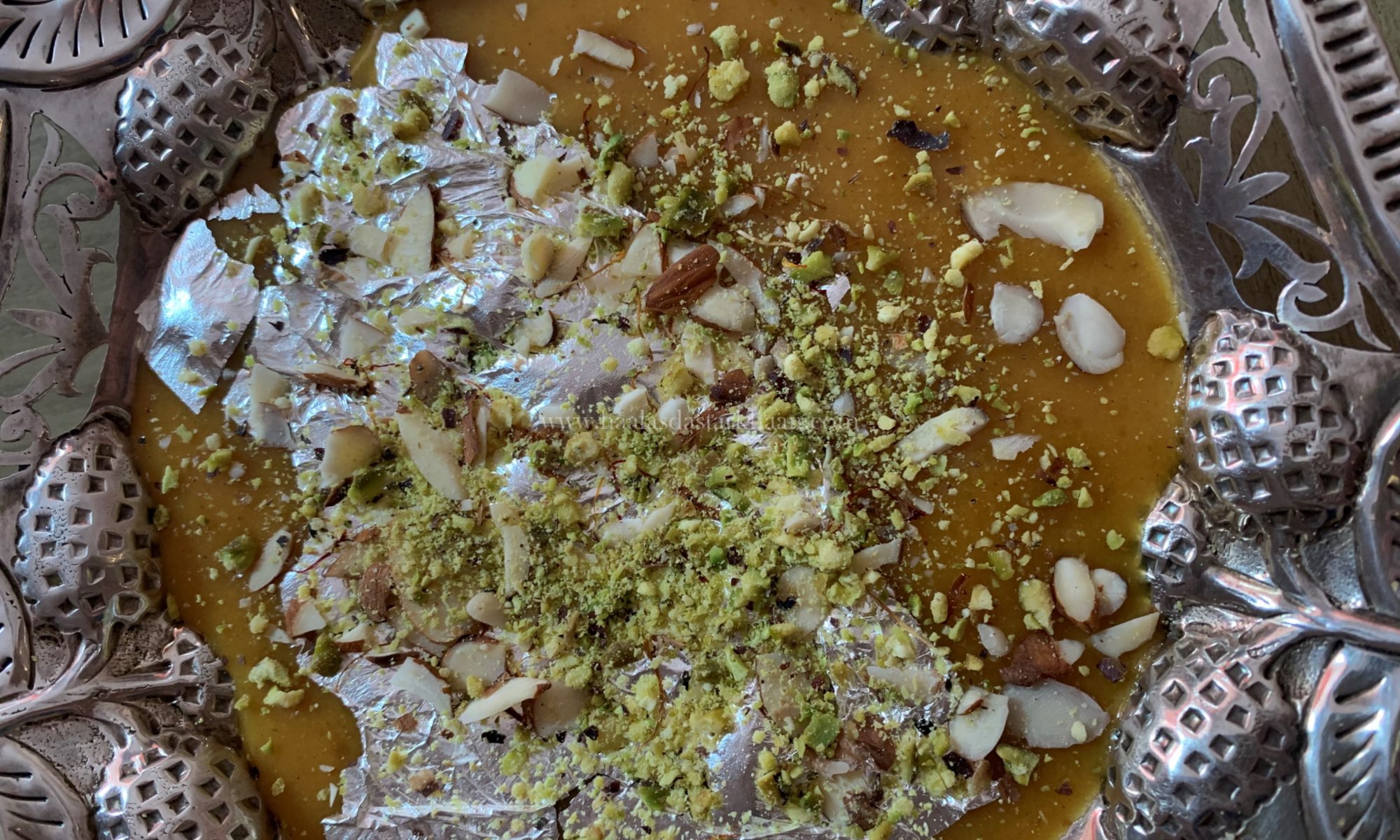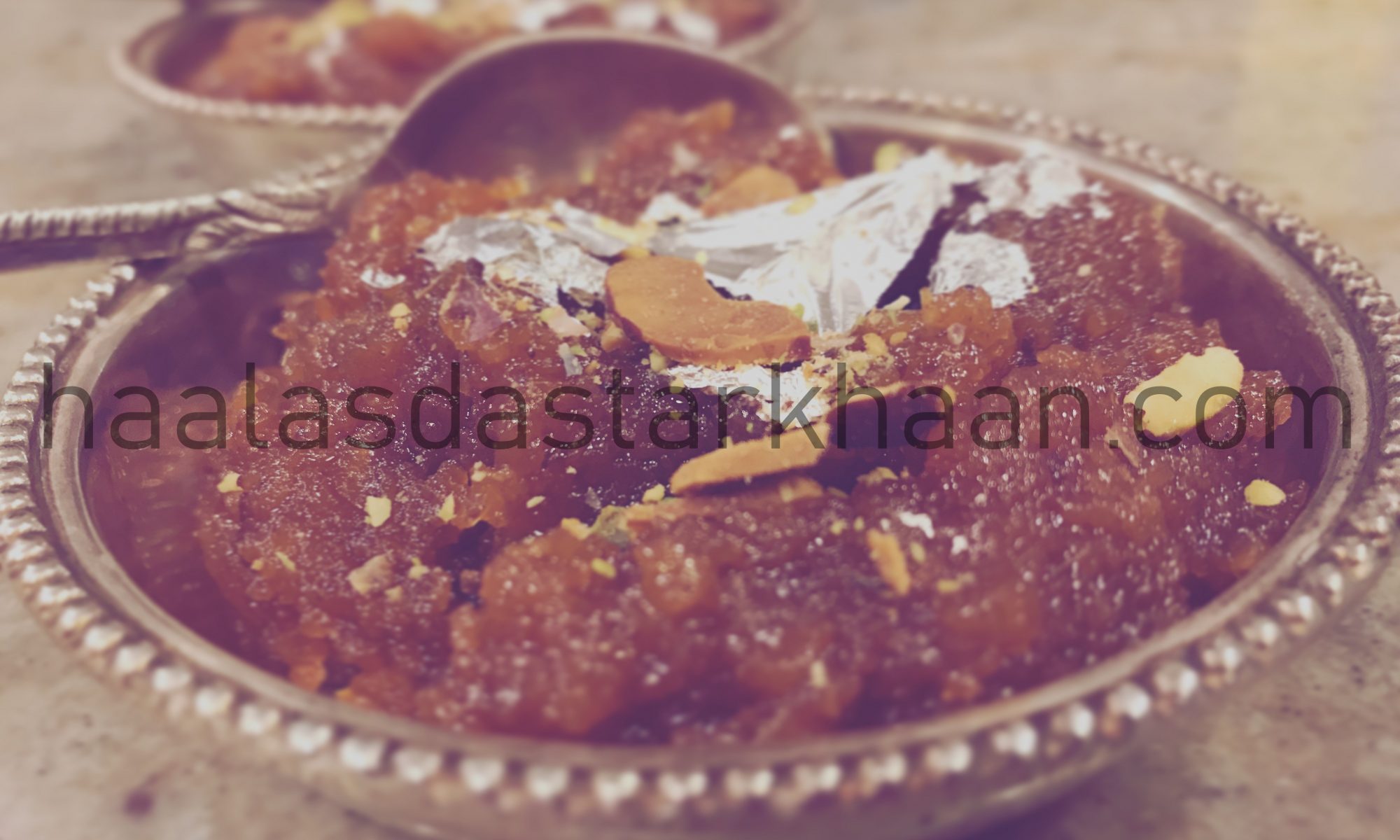Chawal ki Kheer
Chawal ki Kheer is a popular meetha/sweet dish in all Indian/ Pakistani/ Bangladeshi homes. For every special occasion when Kheer is supposed to be made, of all the different varieties of Kheer, Chawal Ki Kheer is made the most.
My love for Chawal ki Kheer is probably since birth. I have never come across any chef/cook or for that matter any person who can make Chawal ki kheer as good as my mother. Since I could understand things well, I would always look forward to days when she would make Kheer. A spoonful in your mouth was enough for anyone to experience a taste of heaven. The funny part is that I never liked the Kheer anyone else made, it was in my view a complete injustice to the dish. I expected people to work harder and make it just like my mom. Since I was a kid, I never realized the amount of effort and hard work she puts into it. When I grew up, and with time started getting ready to explore the world of spices and learn the art of cooking good food is when I saw how many hours it took her to actually make something so deliciously wonderful and that’s when I understood why I see so many faces of relatives and friends on Eid, that I do not see all year round and requesting for my mother’s special Kheer.
There is no way that I will be able to describe the number of hours she gave into it, but I can definitely give you an idea. So, we are a family that comprises almost 150+ members, almost. Please do not get shocked reading this. This includes my grandfather’s children and their families and considering that my grandfather had 9 children, all kids have large families and most of my aunts had grandchildren while I was still in my teens. So it was this plus distant family and friends. Making Kheer for these many people made my mom look like a “Khansama”. I am sure she felt that at times too. She would get around 40-50 liters of milk, maybe more and slow cook that milk till it reduces to almost 2/3 of the original quantity. Now, reducing the milk isn’t as easy as it sounds. That’s actually the first and the most important step. The Milk has to be stirred continuously so it’s evenly cooked and it shouldn’t get burnt at the bottom either. The flame or heat should be kept low. The process is tiring but worth it. The way my mom taught me was to stir once in a circular way and the second time makes the number eight. Honestly, I never realized till I was a grown-up that this is the best way to cover the whole base of the pot.
So, once the milk is reduced, you add cashew powder to it. The cashew powder does not just add some thickness and texture to it but also gives out a little sweetness and nutty flavor that is super amazing. Besides that adding, chopped almonds are a delicious add-on as well. After that, add khoya/maawa or Khoya powder, but that’s completely optional. I prefer using small grained Rice for the kheer because they are easier to mash and the texture is perfect for the Kheer after being mashed. You can use Kani ke chawal or Kaima Rice or any other small grained Rice. My mother always added condensed milk to her Kheer and some people thought that was the secret ingredient, but honestly, it’s just the magic of her hands and all the hard work. Only ingredients never make a dish great, it’s mainly the effort put in by the person cooking.
This is a wonderful way of making Kheer. I am still not as good as my mom when it comes to making it but it still comes out delicious and each spoonful makes you crave more.
Halwa Puff Pastry
Halwa Poori is a traditional Bangalore dish, popularly made by Muslim families specially during weddings. During a wedding, a no. of food items go from the Bride’s side to the Groom’s side, which also includes Halwa Poori. There are also numerous occasions when they are made at home, but they kind of always need a special reason. I have no idea where the tradition came from, but it does have a little Mughlai influence and that’s why the traditions are carried on by Muslim families.
The reason probably is also because it a tedious job making them, requires time and effort and usually made in a large batch too. When made, its always distributed among relatives, friends and neighbors. When I first saw Halwa Poori, it reminded me of Diwali Gujiya and honestly I have never been a fan of Gujiya. I always found them too coconuty and I also felt that it was always too dry and the dry coconut would start falling out if not careful. I also felt that if there was something that was nicer, softer and sweeter and Halwa Poori seemed to be a perfect answer to it.
Halwa is made of Chana daal, coconut, Khoya, Milk and sugar cooked together in ghee/ Oil. The poori is made from All purpose flour. The halwa is filled in the poori and then sealed and fried. The traditional recipe is great and awesome if you are serving a large no. of people in a day or two. After that they kind of get a little mushy unless you keep them in a perfect airtight container.
Initially when I started making Halwa Poori, t was hard to make them for just the two of us, Mr. Parveez and me. Making 10 would be more than enough and would last us more than a week and usually by day 2 we would be dead bored and didn’t feel like eating more. So, this is when I felt that the Halwa poori needs a twist and I changed it to halwa Puff Pastry. The good thing about that is that I can always make the dough for puff pastry and keep it in my freezer. And, for the Halwa, I can make and refrigerate it for up to 15-20 days. This way we make the puff pastry whenever we want, eat them warm and fresh and we can also use the Halwa as just halwa minus the poori or puff pastry.
I hope you enjoy making this as much I do..Its definitely a great recipe.
Malpua and Rabri
Rabri and Malpua go hand in hand for marwaris, specially for Jodhpuris. I remember my father and my maternal grandmother being huge fan of Malpuas. Though I have never liked them much, for their bonding relationship with sugar syrup and just like Jalebis, Imartis and Bengali sweets, malpuas also happened to be a sweet dish that I never tried. But, I was always a huge fan of Rabri. In fact, there is a very famous shop in Jodhpur, by the clock tower, an important stop for all tourists, that is popular for its lassi, kulfi and Rabri and every time I traveled to Jodhpur, that would be on my eating out list.
As for the history of Malpua, first reference of this sweet dish was made in the Rigveda, as ‘Apupa’. The recipe of Apupa was something that uses barley flour made in form of flat cakes, deep fried in ghee and then dipped in honey before serving.
Rabri seems to be connected with Bengal because of its flavor resemblance being close to Basundi. Its made by over boiling of milk on low heat, until it becomes dense and pale yellow in color.
I remember when I was 15, a family friend’s daughter, almost 10 years older than me, soon to be married. She loved to cook and would often come to see my mom and would also showcase her cooking skills. She would come to our house very often and she once made Khoye ke malpua and all I saw was 2 people busy making Malpuas and I never gathered the courage to go and peep to even see what was going on. All I saw was my Father and maternal Grandmother, both diabetic, hogging on to those Malpuas before anyone could stop them. They offered it to me and with the look of the dripping sugar syrup, it was a NO from my side. I then saw someone bring in Rabri from my favorite store and I was more than happy eating my plain Rabri. Now since, I have never been a big fan of Malpuas and Mr. Parveez never mentioned it either, it never occurred to me that I should try making them at home. In addition to that, I don’t know why but I always felt that making Malpuas must be too much work and I kind of never felt the need to even try it.
One day, we happened to be watching a Food channel where a food blogger went to Mumbai and showed this guy making big size Malpuas being thrown in the Kadai with boiling ghee and further dipped in the sugar syrup and being served straight away with cold Rabri and Mr. Parveez looked so impressed. So, I just asked him, “Do you like it?’ and he said, “yes”. With me that was more than enough to try making this out.
I checked with a family friend who got me a recipe from one of Jodhpur’s authentic Malpua maker. Sometimes people share secrets, they one have to be sure that no one is taking their business away, second, you need to contact through the right source and third and most important, you just have to be sweet when you ask, and mostly people fail to do the third thing. He never gave me the exact measurements though, but when you cook, ingredients are usually enough for you to crack a recipe because even if you use the exact same measurements, the dish would be completely different when made by 2 different people. I always tell everyone I teach, Don’t learn, get inspired. Learning while copying to do the same, makes you good, But Learning while getting inspired makes you outstanding. Never give up on being unique.
Now my first goal was to work on the Rabri, of course personal reasons. So, I started working on it, it was a slow process and the first time I made it, I was restless because I thought I was doing something wrong and its taking too long, but after that I was a pro and I can now cook 4 dishes the same time as I make Rabri. and, when I tasted it, I was so happy with myself, it tasted much nicer than the Rabri from my favorite sweet store in Jodhpur.
Now the Malpuas, they were much easier than I thought. Few ingredients, paying attention, and your Malpuas are ready to be served. They are very much like pancakes. My first attempt made them a little thick, the second time, I mixed in more milk trying to make them more thin. Try taking a good non stick pan to reduce the quantity of ghee you take.
Rabri can be refrigerated for up to a week. Malpua batter can also be refrigerated for up to 3-4 days. It tends to thicken a little while being refrigerated, you can always add a little milk tablespoon by tablespoon to make the consistency thinner.
I have out up ways and pics of both the thick Malpua and the thin Malpua. You can see both ways and pick your favorite. Though I have given the recipe of Rabri after the Malpua, but its always recommended that you make the Rabri few hours, if not a day before and refrigerate it. The Malpua needs to be hot and the Rabri needs to be chilled when served.
Decorate with silver leaf, crushed nuts and roses or anyway you like or just plain…the taste is so good that it will be loved and appreciated any which way. Enjoy!!!
Chane ki Daal ka Meetha
This is the first sweet dish that I made from my Sasuraal side. Coming from Rajasthan, I was in love with Moong ki daal ka Halwa and when I heard about Chane ki daal ka Halwa, I was super excited and loved the taste when I tried it. Once we moved to USA, I started trying to make it on home.
The first try was something I did by myself, without asking my Mother in law for the recipe, but for some reason it wasn’t as good as what we had eaten and neither me, nor Mr. Parveez was able to figure out what went wrong or what was missing. And, that’s when my Mother in law came to the rescue. I spoke to her over the phone, giving her details about how I tried making the “meetha” and that I didn’t understand what went wrong. She patiently explained the over all recipe and the “magic ingredient” that I missed was Cinnamon and cloves.
Little did I think that Cinnamon and clove make so much difference to this Halwa. I could never imagine adding these 2 ingredients will actually add so much flavor and fragrance to this sweet.
This sweet dish is one of the easiest sweets I have ever made and it has always impressed everyone. The best part that I like about this sweet dish that, it’s mistake proof. Having said that, I mean that there is no mistake that you make while cooking this, that cannot be fixed and that too easily. So, if you are new at making Indian sweet dishes, this is your go to dish. It’s great for beginners and also great if you have to make something in a jiffy.
Moong Daal Halwa
A sweet dish from the heart of Marwar. Moong daal Halwa is a popular sweet dish made on various occasions in families. Festivals have this Halwa as one of the main sweet dishes.
This is one of my most favorite sweets and Making it perfectly took a little while. I searched loads of recipes and tried recipes shared by friends, but either they were too time consuming or never came out tasting perfect.
Going through trials and errors, I finally came up with this recipe which is easy to make, less time consuming and tastes perfect as well. Moong daal Halwa has a long shelf life. It can be frozen for up to 3 months and in the refrigerator for up to 2 weeks.

